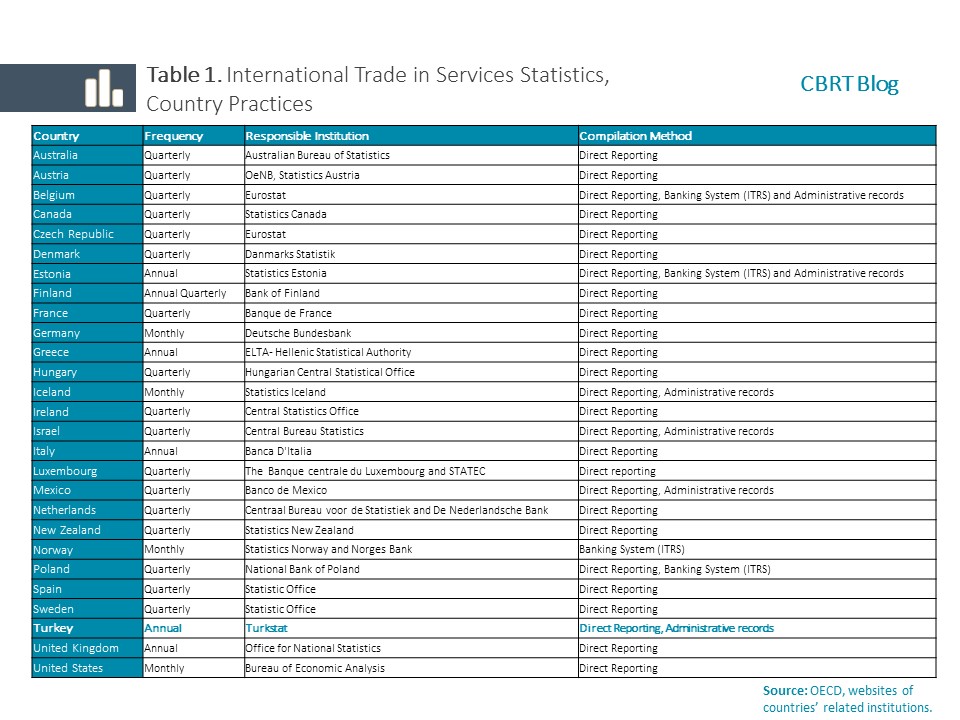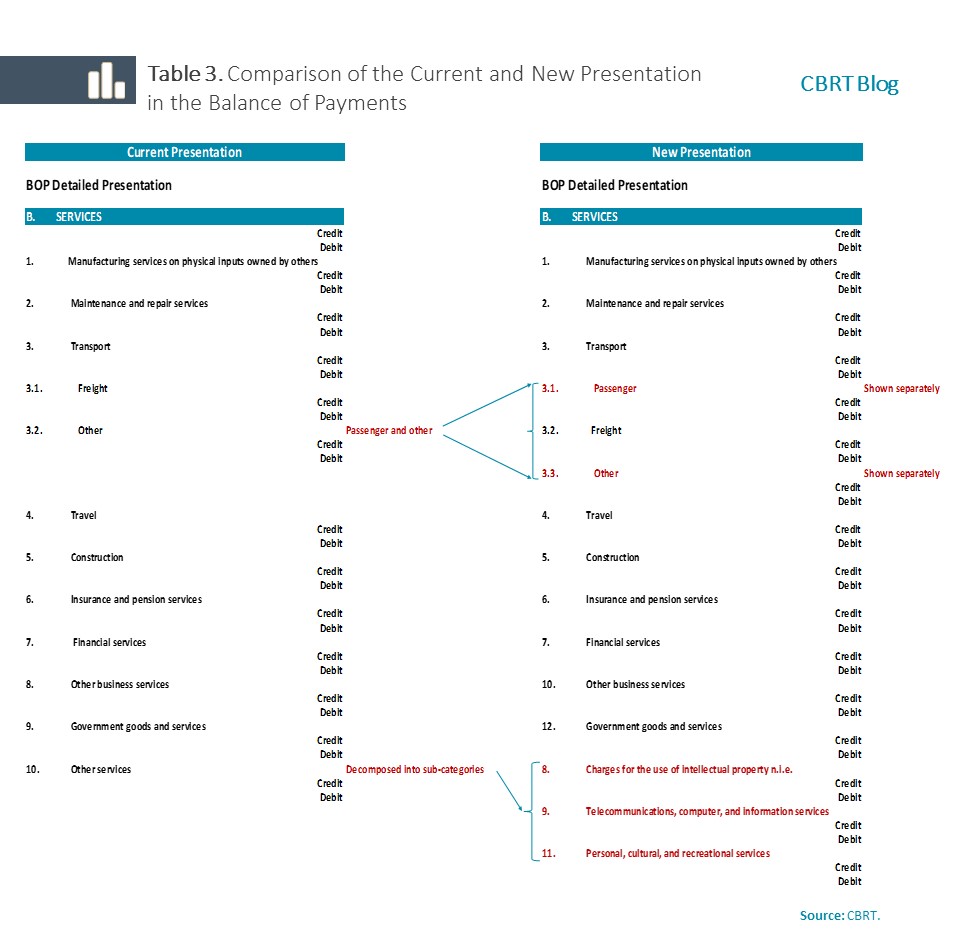The International Trade in Services (ITS) refers to the exchange of services between residents (natural and legal persons) and non-residents of a country. Services differ from goods or other types of economic activities in that:
- They are intangible,
- They cannot be stored or transferred,
- They include a direct interaction between the service provider and the beneficiary.
The Extended Balance of Payments Services Classification (EBOPS) is used for the ITS. This classification displays international services under 12 main categories:
- Manufacturing services on physical inputs owned by others
- Maintenance and repair services
- Transport
- Travel
- Construction
- Insurance and pension services
- Financial services
- Charges for the use of intellectual property
- Telecommunications, computer, and information services
- Other business services
- Personal, cultural, and recreational services
- Government goods and services
How is the International Services Supplied?
The World Trade Organization defines four modes of supply for services based on the classification of international services:
Cross-border
Examples include a legal counselling firm offering legal advice to a consumer abroad by phone, an internet user purchasing and downloading software or an application from a firm abroad, or online training services received from abroad or offered to consumers abroad.
Consumption abroad
This covers the expenditures by natural persons in the economy of another country visited and the services received in that country. The most typical example is tourism.
Commercial presence
Examples include financial services provided by an overseas branch of a bank in Turkey, or contracting services offered by a construction firm’s affiliate abroad. This mode of supply is, by its nature, the subject of direct investments rather than services.
Presence of natural persons
This includes services supplied by professionals on behalf of themselves or their employers through temporary presence in the territory of another country.
How is the ITS Measured?
The nature of the trade in services makes it more difficult to measure than foreign trade, i.e. the trade in goods. Based on international methodology, countries compile their trade in services statistics through three different methods:
- Through the banking system,
- Collecting data directly from natural and legal persons being partner of trade in services,
- Using administrative records of institutions and organizations.
Depending on the structure and availability of data sources, these methods can be used separately or together.
What are the Country Practices?
An analysis of country practices reveals that the ITS statistics are largely compiled by statistical offices and the direct reporting is the predominantly used data collection method (Table 1).

What is the Practice in Turkey?
Until recently, trade in services data in Turkey were compiled by the Central Bank under the Balance of Payments Statistics, predominantly in an “aggregated level from banking transactions”. The data sources have been enriched with the use of the International Trade in Services Survey (ITSS) conducted by the Turkish Statistical Institute (TurkStat), the administrative records of the Turkish Revenue Administration, and direct reporting by firms. In addition, TurkStat started compiling micro-level data in a detailed breakdown by type of services and country. Statistics thus compiled were published for the first time on 5 March 2020 via a news bulletin headlined “International Trade in Services Statistics” (Table 2).

How will the Publication of ITS Statistics Affect the Balance of Payments Statistics?
TurkStat’s “foreign trade and tourism statistics” constitute the most important data source for the current account item in the balance of payments. The new ITS statistics will also serve as the main data source for the services account and the related items will be revised accordingly. In addition, compared with the current presentation, the new presentation will offer a more detailed display of services that will include 12 main items (Table 3).

To sum up, the ITS statistics introduced by TurkStat are based on comprehensive micro-databases comprising administrative records and firms’ direct reporting. These statistics provide information at international standards in a breakdown by type of services and country. Also constituting an important item of the balance of payments published by the Central Bank, the ITS will serve as the new data source for the services account. Thus, the services item will be displayed in a more detailed format than the current format.
Publication of the ITS statistics is definitely a significant phase for Turkey. These statistics will enable us to make more comprehensive and informative analyses.
